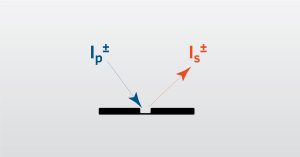
Increase the Reliability of Products in the Field with DPA
High reliability electronic components like integrated circuits are often required to operate for long periods of time, having little or no opportunity for replacement.
Home » Boron Carbide for Use in Industrial and Life Saving Products
Ballistic body armor, as well as armor for terrestrial vehicles and aircraft, are critical applications for advanced ceramics like boron carbide. They provide potentially lifesaving protection for the military and law enforcement personnel who defend our nation, our freedoms, and our safety. This armor is extremely valuable but what makes it effective protection against bullets and shrapnel? The answer can be found in the material properties of boron carbide. Boron carbide is a hard and lightweight ceramic material that has proven extraordinarily versatile across a range of industries and applications. According to Advanced Ceramic Materials, “boron carbide ceramics have long been used in bulletproof armor and was first used in the 1960s to design bulletproof vests and to fit into the seats of airplane pilots” (Ross 2023)1. Boron carbide (expressed

chemically as B4C or B12C3) is among the hardest known materials, only surpassed by cubic boron nitride and diamond. Boron carbide has a range of remarkable properties including resistance to chemical attack and ionizing radiation, high elastic modulus and fracture toughness, low density (slightly less than aluminum), high melting and boiling points, high neutron cross section (ability to shield against neutrons), and it is also a semiconductor. Its products are especially suitable for lightweight armor applications.
Boron carbide is typically produced through a process called carbothermic reduction, which involves heating a mixture of boron-based and carbonaceous raw materials in an electric arc furnace. First, a mixture of boron oxide (B2O3) or boric acid (H3BO3) and carbon (such as graphite or petroleum coke) is prepared. The mixture is then loaded into an electric arc furnace and heated to a temperature of around 2000-2200°C. As the mixture heats up, the boron oxide reacts with the carbon to form boron carbide and carbon monoxide gas. The boron carbide and any unreacted boron oxide are collected in a crucible located at the bottom of the furnace. The resulting boron carbide is then cooled and crushed to the desired particle size for use in various applications. It is worth noting that boron carbide can also be produced using other methods, but carbothermic reduction is the most common method used for commercial production due to its relatively low cost and high efficiency.

Due to its unique properties, boron carbide has a wide range of industrial applications, such as nozzles for sandblasting and water jet cutting, personnel and vehicle armor plating, abrasives and abrasion-resistant coatings, linings for rocket engine nozzles and (terrestrial) vehicle breaks, and as a neutron absorber in nuclear reactors. The purity of boron carbide is critical for many of its applications, particularly in the nuclear industry. Impurities in boron carbide can affect its neutron absorption properties, which can impact the safety and efficiency of nuclear reactors. For this reason, the purity of boron carbide used in the nuclear industry is carefully controlled and monitored. Elemental impurities such as Al, Cl, F, Fe, Ni, Si, and W can induce harmful side effects when boron carbide is used in
nuclear reactors. These impurities can derive from the boric acid or boron oxide raw material or can be introduced during mechanical processing of the boron carbide into its desired final form. In addition to detecting and quantifying undesirable impurities, some applications of boron carbide require measuring intentional additives present at minor or trace concentrations. For example, researchers at Texas A&M and collaborating institutions found that doping boron carbide with silicon to a concentration of just 1% weight led to a substantially less brittle material (Xiang et al. 2019) – a major advance that can improve the effectiveness of body armor at protecting against high-speed impact.
The elemental purity of boron carbide can be measured using several methods offered by EAG Laboratories, such as Glow Discharge Mass Spectrometry (GDMS), Inductively Coupled Plasma-Optical Emission Spectroscopy (ICP-OES), Inductively Coupled Plasma-Mass Spectrometry (ICP-MS), Laser Ablation-ICP-MS (LA-ICP-MS), Laser Induced Breakdown Spectroscopy (LIBS), and X-Ray Fluorescence spectroscopy (XRF). As an incredibly resilient refractory material, boron carbide is well-suited to solid-state analytical techniques like GDMS, LA-ICP-MS, LIBS, and XRF which eliminate the need for sample digestion. Which technique(s) to use is determined by the analytes of interest, their expected concentrations, and sample morphology. EAG scientists have a wealth of experience tailoring analyses to the specific needs of each unique job, ensuring that clients don’t just get data – they get results that help them achieve their objectives. Contact us today to learn more about our capabilities for analyzing boron carbide.
1Ross, Lisa K. Silicon Carbide & Boron Carbide Ceramics Used in Bulletproof Armor. n.d. Web Post. 04 05 2023. <https://www.preciseceramic.com/blog/silicon-carbide-and-boron-carbide-ceramics-are-used-in-bulletproof-armor.html>.
2Xiang, S., Ma, L., Yang, B., Dieudonne, Y., Pharr, G.M., Lu, J., Yadav, D., Hwang, C., Lasalvia, J.C., Haber, R.A. and Hemker, K.J., 2019. Tuning the deformation mechanisms of boron carbide via silicon doping. Science Advances, Volume 5. Issue 10.

High reliability electronic components like integrated circuits are often required to operate for long periods of time, having little or no opportunity for replacement.

In this webinar we will focus on Dynamic Secondary Ion Mass Spectrometry which used to investigate the elemental structure of materials.
Contamination control and defect reduction are critical issues in the manufacturing process of compound semiconductor devices which can impact the performance of the end product. We can provide valuable insights to identify contaminants and characterize materials throughout the product lifecycle.

Eurofins EAG Laboratories stands ready to assist in the analysis of lithium-ion batteries from the raw material supply chain through to the finished product and eventual recycling.
To enable certain features and improve your experience with us, this site stores cookies on your computer. Please click Continue to provide your authorization and permanently remove this message.
To find out more, please see our privacy policy.